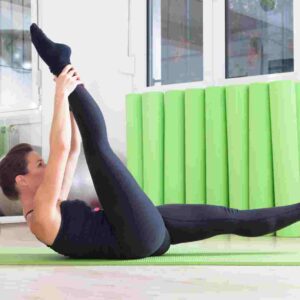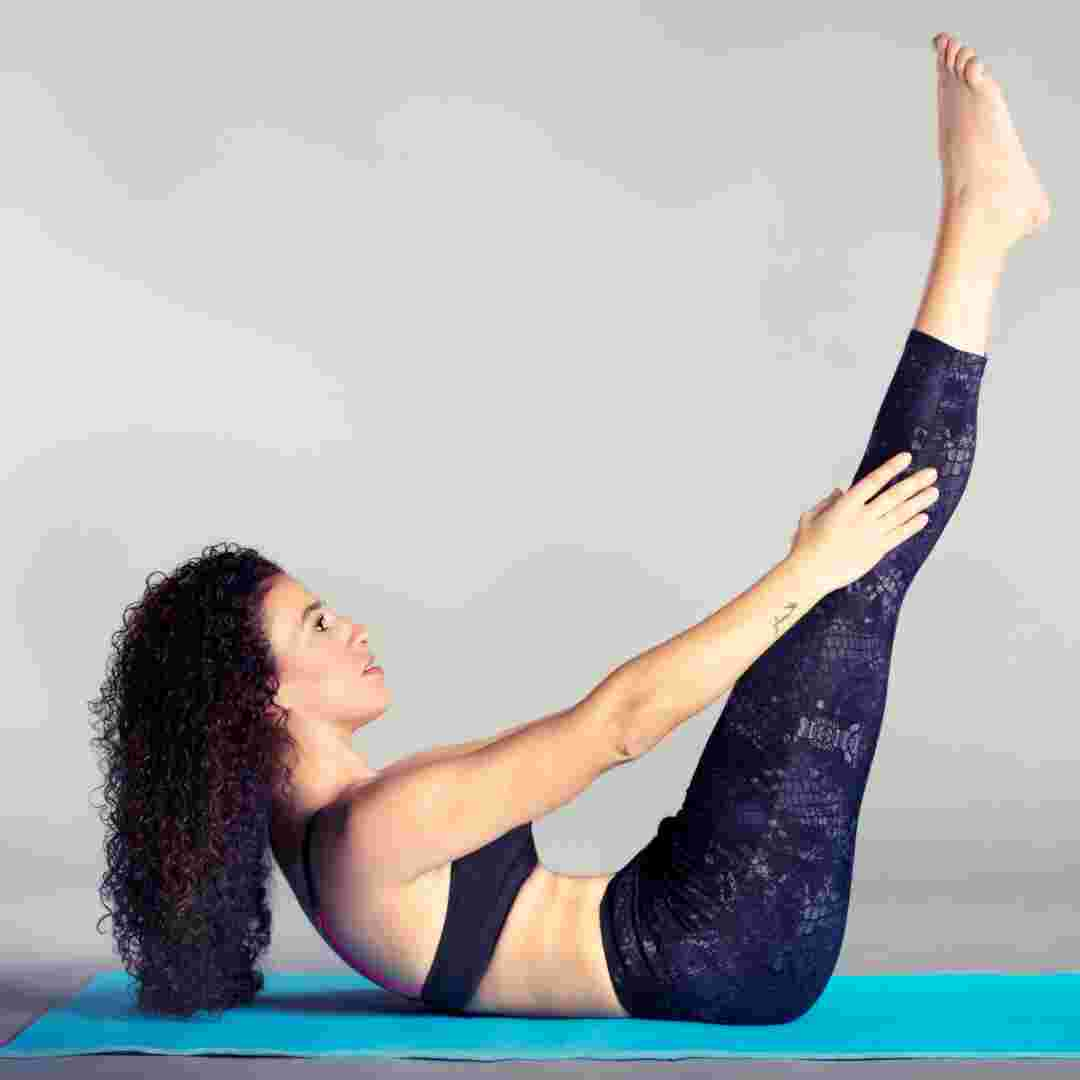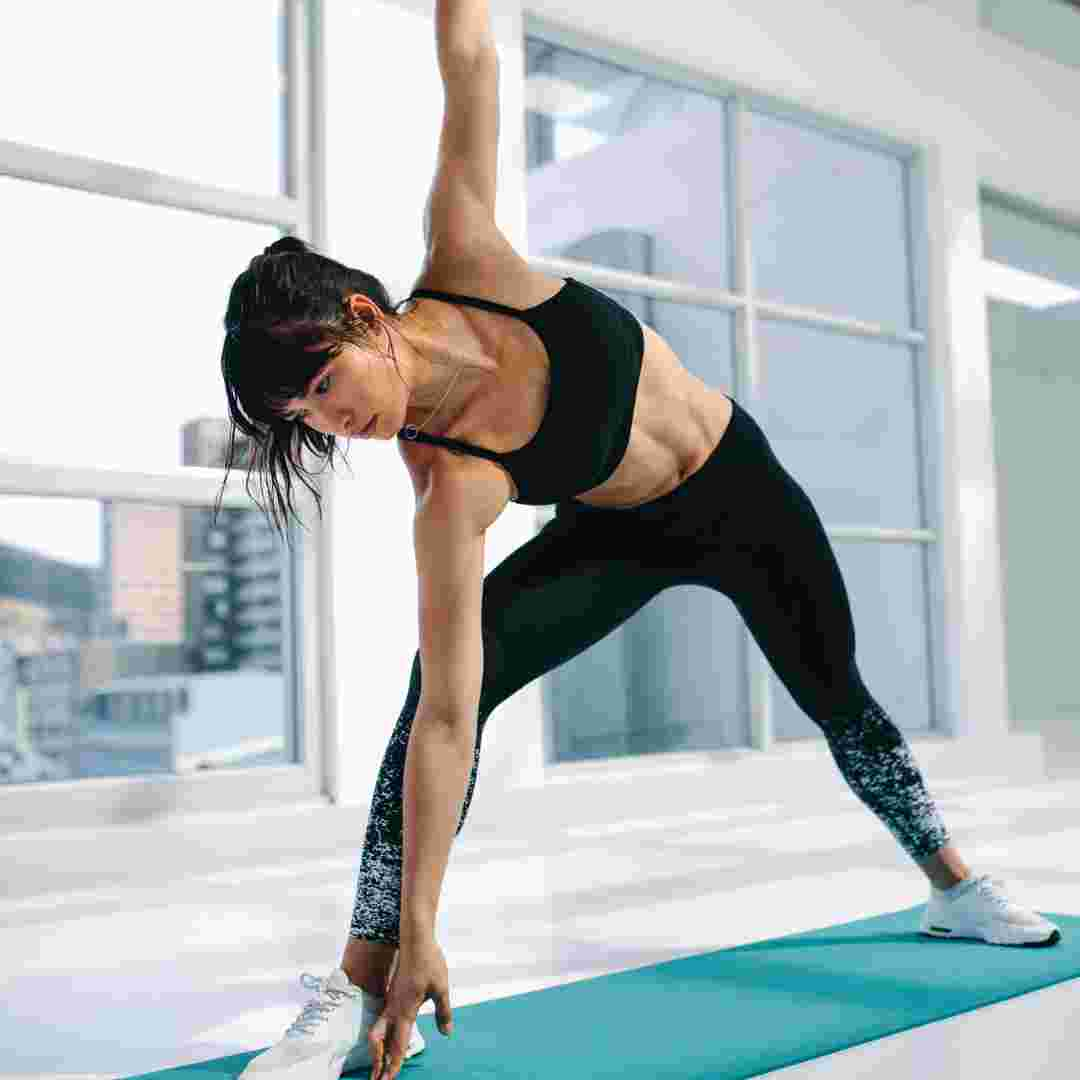Contents Table
Introduction
5 Core Strengthening Pilates Exercises
Pilates for Posture: Alignment Improvement
Stress Reduction and Relaxation with Pilates
Q&A
Conclusion
"Transform your body and mind with Pilates—the best strength, flexibility, and balance workout."
Introduction
Pilates strengthens core muscles, improves flexibility, and improves posture. Controlled movements on a mat or with specialised equipment are involved. Pilates is good for all ages and fitness levels and improves physical and mental wellbeing. This article discusses using Pilates to reach fitness goals.
5 Core Strengthening Pilates Exercises
Pilates strengthens core muscles. This early 20th-century exercise was created by Joseph Pilates and is now popular worldwide. Pilates improves posture, flexibility, balance, and muscle tone and strength.
Where to start with Pilates can be intimidating. Here are five core-building Pilates exercises:
1. The Hundred
The Hundred is a traditional Pilates exercise that warms up and strengthens the core. Lay on your back with your knees bent and feet flat to execute the Hundred. Raise your head and shoulders and extend your arms in front of you. Pump your arms up and down while inhaling and exhaling five times. Count 100 times.
2. Roll-up
Another traditional Pilates exercise, the Roll-Up, strengthens the core and increases flexibility. Lay on your back with your arms above your head to do the Roll-Up. To sit up with your arms extended in front of you, slowly roll up each vertebra. Roll back to the start one vertebra at a time.
3. The Plank
Planks build core strength and body strength. Start the Plank in a push-up with arms extended and hands shoulder-width apart. Hold your body straight from head to heels as long as possible.
4. Side Plank
Plank variations like the Side Plank target obliques. Start in Plank, then move your weight onto one arm and rotate to the side to execute the Side Plank. Hold your body straight from head to heels as long as possible. Flip and repeat.
5. Teaser
The Teaser is a hard Pilates exercise that strengthens the core and balance. The Teaser involves lying on your back with your arms above your head and legs in front of you. Slowly roll up each vertebra until you are sitting up with your arms in front of you and legs up. Hold for a few seconds, then slowly roll back to the start.
Pilates is wonderful for core strength and general body strength. If you're new to Pilates or want to mix up your practise, start with these five exercises. To avoid injury, listen to your body and adjust activities as needed. You'll get stronger and healthier with regular practise.
Pilates for Posture: Alignment Improvement
Pilates has been around for almost a century. Joseph Pilates created it because he believed mental and physical health were linked. Low-impact Pilates strengthens core muscles, improves flexibility, and improves posture. This article discusses how Pilates improves posture.
We hold our bodies in posture when standing, sitting, or lying down. Maintaining a healthy spine and preventing back discomfort requires good posture. Poor posture can cause muscular imbalances, joint pain, and respiratory issues. By strengthening spine-supporting muscles and aligning your body, Pilates can improve posture.
Find a qualified Pilates instructor to improve your posture. Pilates demands exact technique to work. A trained instructor can fix your form and accommodate physical constraints.
You can start Pilates after finding a teacher. Pilates is done on a mat or with a reformer or Cadillac. Core workouts target the abdominals, back, and pelvic floor. Strengthening these muscles improves posture and reduces back discomfort.
A major Pilates principle is good alignment. This implies your body is properly positioned for each activity. Your instructor will help you position your body during each exercise. Proper alignment distributes weight evenly, decreasing joint and muscular strain.
Pilates breathing is also vital for posture. Pilates uses deep, controlled breathing to relax and engage the core. Deep breathing improves posture and reduces muscle tension.
Pelvic tilt, spine stretch, and shoulder bridge are good Pilates posture exercises. The pelvic tilt involves reclining on your back with bent knees and flat feet. You then engage your core and tilt your pelvis towards your belly button, flattening your lower back against the mat. This exercise strengthens lower back and aligns pelvis.
The spine stretch involves sitting on the mat with legs extended in front. Your arms extend forward, lengthening your spine and hamstrings. This exercise reduces back strain and improves spinal mobility.
The shoulder bridge requires lying on your back with bent knees and flat feet. Lifting your hips to the ceiling engages your glutes and hamstrings. This lower back and glute strengthening exercise improves pelvic alignment and reduces back discomfort.
Finally, Pilates improves posture well. Pilates reduces back pain and improves health by strengthening core muscles and aligning the body. Start Pilates with a trained instructor and regular practise. Pilates can improve posture and provide many benefits with time and effort.
Stress Reduction and Relaxation with Pilates
Pilates has grown in popularity. This low-impact workout strengthens core muscles, improves flexibility, and relaxes. Pilates relieves stress and tension, making it a terrific alternative for improving overall health.
Stress reduction is a major Pilates advantage. Pilates' slow, controlled motions soothe mind and body. This is very helpful for anxiety and stress sufferers. Pilates can also promote sleep, which is vital to health.
Pilates also boosts flexibility. Pilates exercises stretch and lengthen muscles, improving range of motion and reducing injury risk. People recovering from injuries or with limited mobility need this.
Pilates is also great for core strength. The core muscles support the spine and pelvis and are necessary for optimal posture and balance. Pilates improves posture and reduces fall risk by targeting these muscles.
Pilates beginners should start slowly with a trained teacher. Pilates can be difficult, therefore perfect form and technique are crucial to avoid injury. Qualified instructors can also help you tailor exercises to your requirements and goals.
Concentrate on your breath during Pilates. Pilates requires breathing, which helps relieve stress and relax. Deep, deliberate breaths are taken in and out through the nose and mouth in Pilates.
Practise Pilates at home or at a studio. Home practise requires a comfortable mat and space to move. Pilates videos are available online or on DVD. Remember that practising with a certified instructor is optimal.
Finally, Pilates improves general health. It reduces stress, increases flexibility, and strengthens core muscles. Pilates beginners should start slowly with a trained teacher. To get the best results, focus on your breath and practise consistently. Pilates can soothe, energise, and balance you with regular practise.

Q&A
1. Pilates, what?
Pilates strengthens core muscles, improves flexibility, and improves posture.
2. How do I start Pilates?
You can take Pilates classes at a studio or gym or use online videos or DVDs. Start with basic exercises and go up as you gain confidence.
3. The benefits of Pilates?
Pilates improves core strength, flexibility, posture, stress, and health and well-being. It can improve injury recovery and chronic pain management.
Conclusion
Conclusion: Low-impact Pilates improves flexibility, strength, and balance. A professional instructor should teach good technique and form to avoid injury and maximise the advantages. Pilates can be added to a workout or done alone. It suits all ages and fitness levels.


